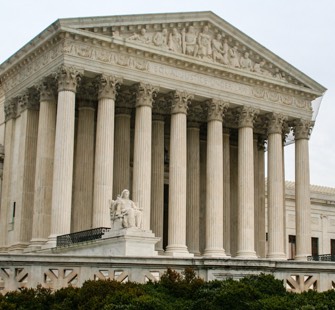 The United States Supreme Court recently issued its decision in SCA Hygiene Products Aktiebolag et al. v. First Quality Baby Products, LLC, et al. The issue before the Supreme Court was whether the defense of laches remained a viable defense to patent infringement actions brought during the exceptionally long six-year statute of limitations. The Supreme Court ruled that the defense of laches is inappropriate for claims brought within the statute of limitations, hardly a shocking ruling given that the Court reached the same ruling only several years ago with respect to laches as a defense in copyright infringement claims. See Petrella v. Metro-Goldwyn-Mayer, Inc., 572 U.S. ___ (2014).
The United States Supreme Court recently issued its decision in SCA Hygiene Products Aktiebolag et al. v. First Quality Baby Products, LLC, et al. The issue before the Supreme Court was whether the defense of laches remained a viable defense to patent infringement actions brought during the exceptionally long six-year statute of limitations. The Supreme Court ruled that the defense of laches is inappropriate for claims brought within the statute of limitations, hardly a shocking ruling given that the Court reached the same ruling only several years ago with respect to laches as a defense in copyright infringement claims. See Petrella v. Metro-Goldwyn-Mayer, Inc., 572 U.S. ___ (2014).
Unlike most patent decisions, the decision in SCA Hygiene Products was not unanimous. The majority opinion was delivered by Justice Alito, who was joined by the Chief Justice, as well as Justices Kennedy, Thomas, Ginsburg, Sotomayor, and Kagan. A dissent was filed by Justice Breyer, who would have affirmed the Federal Circuit ruling finding that 35 U.S.C. 282 codified a laches defense without using the term “laches.” It was Justice Breyer’s belief that the codified defense of unenforceability allowed for a laches defense to patent infringement actions, explaining that in very old cases interpreting the common law, laches was at times equated to unenforceability.
Justice Alito explained, in a rather exasperated way, that the Federal Circuit seemed to ignore previous Supreme Court pronouncements that laches could not be used as a defense to a claim brought during the statute of limitations period because those cases did not specifically deal with a claim of patent infringement. This gave Alito the opportunity to again lecture the Federal Circuit, this time by citing to Judge Hughes’ en banc dissent, which explained that patents and patent cases are not special, and that the law applies equally to patents and patent cases.
First Quality did make an interesting argument about the six-year statute of limitations for patent infringement actions not being a true statute of limitations because it counts backwards from the filing of the complaint, rather than forward from the date of infringement. The importance of this nuance seemed to be missed by the majority. Only Justice Breyer really seemed to understand the importance of the argument. Of course, without a laches defense possible, a patent owner could lie in wait for infringement to become widespread and then sue for infringement seeking only the previous six years’ worth of damages.
As interesting as this decision is, the Supreme Court did not consider the remaining viability of an equitable estoppel defense. Thus, it is possible that much is being made out of very little. Indeed, it is difficult to think of a situation where laches would have been successful as a defense without there also being facts sufficient to establish equitable estoppel. Perhaps that hypothesis will be tested in the coming years.
Tags: laches, patent, patents, SCOTUS, Supreme Court




You share in the PLI Practice Center community, so we just ask that you keep things civil. Leave out the personal attacks. Do not use profanity, ethnic or racial slurs, or take shots at anyone's sexual orientation or religion. If you can't be nice, we reserve the right to remove your material and ban users who violate our Terms of Service.